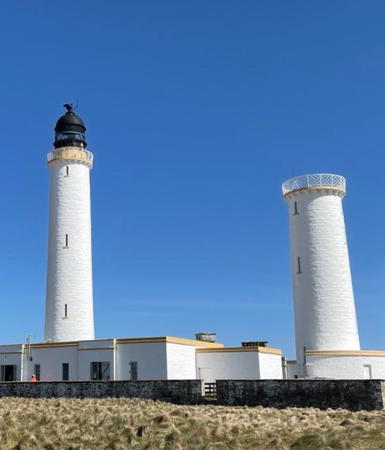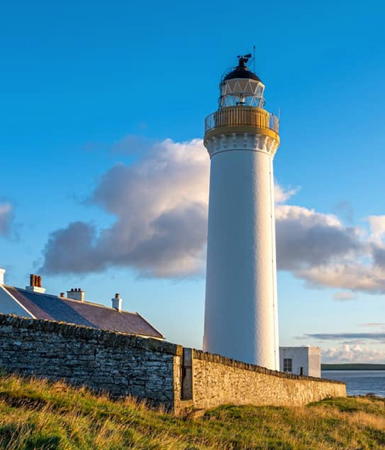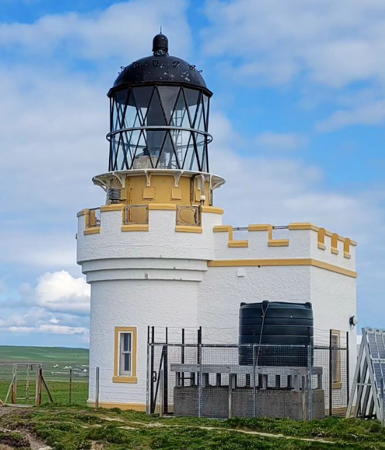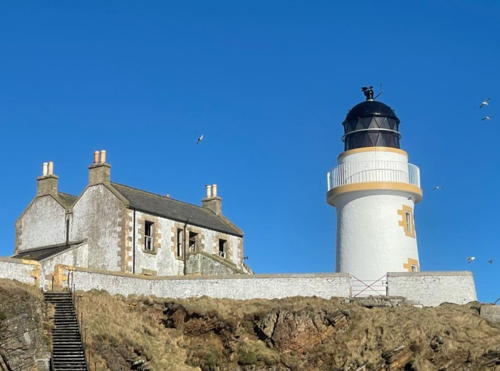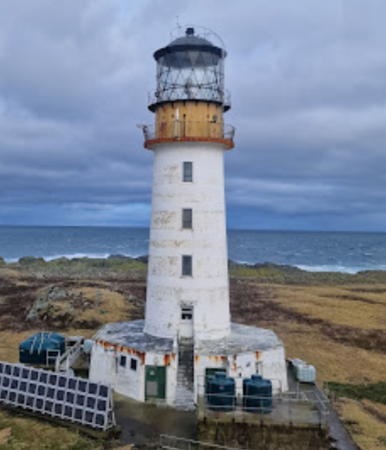The United Kingdom (officially the United Kingdom of Great Britain and Northern Ireland) includes England, Scotland, Wales, and Northern Ireland. Occupying the northern third of the island of Great Britain, the kingdom of Scotland has shared its monarch with England since 1603 and has been part of the United Kingdom since 1707. The coastline of the country is deeply cut by inlets, and there are more than 790 islands. The country has a long and distingushed maritime history; many of the most famous British captains and navigators have been Scots.
Orkney is a former county, now one of Scotland's 32 unitary council areas, including some 70 islands lying north of the mainland of Scotland. The islands are separated from the mainland by the narrow waters of Pentland Firth. Twenty of them are inhabited, the largest being Orkney Mainland. The town of Kirkwall is the administrative center. The population is about 22,000. The islands are accessible by air and by ferries from Aberdeen; they can also be reached by a shorter ferry ride from Scrabster on the mainland side of Pentland Firth.
Orkney was conquered by Vikings in the ninth century and remained at least nominally under Norse rule until it was annexed by Scotland in 1472. As a result there is a Norse influence on place names and geographical terms. A ness is a cape or headland, a flow (from the Norse floi) is a bay, and the ending -ay (from the Norse ey) means "island." A holm is a small rounded island and a skerry is a small, rocky island.
The Northern Lighthouse Board is responsible for building and maintaining the major lighthouses in these northern islands. Harbor lights are maintained by the Orkney Harbour Authority.
ARLHS numbers are from the ARLHS World List of Lights. Admiralty numbers are from Volume A of the Admiralty List of Lights & Fog Signals. U.S. NGA numbers are from Publication 114.
- General Sources
- Northern Lighthouse Board - Lighthouse Library
- The Board's web site includes information and photos for many of the lighthouses.
- Michael's Comprehensive List of Scottish Lights - Orkney Islands
- Data and photos posted by Michael Spencer.
- Lighthouse Archives
- Lighthouse information from LighthouseAccommondations.uk.
- Online List of Lights - Pentland Firth and Orkney Islands
- Photos by various photographers posted by Alexander Trabas. Many of the Orkney photos are by Ina Rendtel or Capt. Peter Mosselberger ("Capt. Peter").
- Lighthouses of Scotland - Orkney
- A collection of outstanding photos.
- Lighthouses in the Orkney Islands
- Photos available from Wikimedia; many of these photos were first posted on Geograph.org.uk.
- World of Lighthouses - Scotland
- Photos by various photographers available from Lightphotos.net.
- United Kingdom Lighthouses
- Aerial photos posted by Marinas.com.
- The Stevensons
- The history of Scotland's remarkable family of lighthouse engineers.
- Britische Leuchttürme auf historischen Postkarten
- Historic postcard images posted by Klaus Huelse.
- GPSNavigationCharts
- Navigation chart for Orkney.
- Google Maps
- Satellite view of Orkney.

Noup Head Light, Westray, June 2022
Google Maps photo by
Kevin Law
